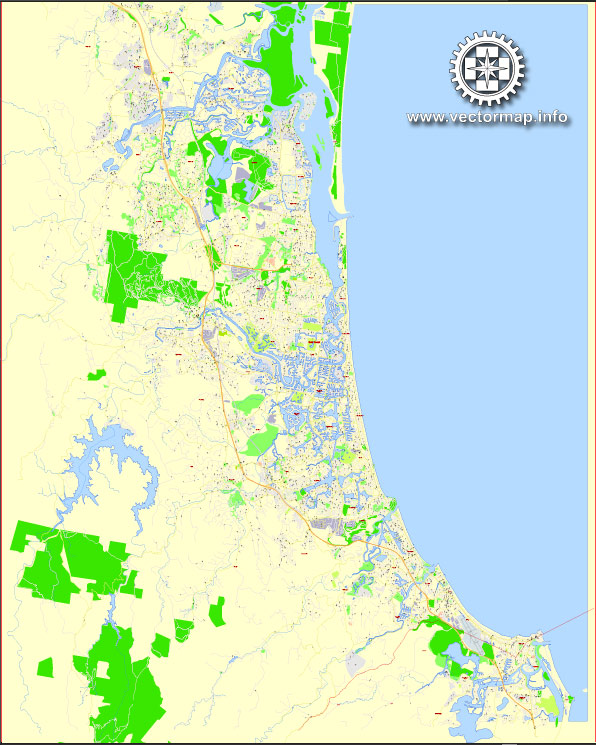The Gold Coast is a region located in the southeastern part of the Australian state of Queensland. It is known for its beautiful beaches, vibrant nightlife, and tourist attractions, but it also has a rich history that dates back to pre-European settlement. Here’s a brief overview of the history and description of the Gold Coast:
- Indigenous History: Before European settlement, the Gold Coast region was inhabited by the Indigenous Yugambeh people, who had a rich culture and deep connection to the land. They called the area “Kombumerri,” and their lifestyle was centered around fishing, hunting, and gathering.
- European Exploration: European exploration of the region began in the late 18th century when Captain James Cook sailed along the eastern coast of Australia. However, it wasn’t until the mid-19th century that European settlers established a presence in the area. Timber cutting and farming were early industries in the region.
- Southport and Early Development: Southport, one of the Gold Coast’s major suburbs, was founded in 1874. It quickly became a hub for maritime trade and a gateway to the hinterland.
- Tourism Boom: The Gold Coast’s transformation into a major tourist destination began in the early 20th century when the region’s beautiful beaches and natural attractions were promoted. Surfers Paradise, one of the most iconic areas on the Gold Coast, started to develop in the 1920s and is now known for its high-rise buildings, entertainment, and nightlife.
- Post-World War II Development: The Gold Coast experienced significant growth and development after World War II. The region’s tourism industry expanded, and it became a popular destination for both Australian and international visitors. The construction of theme parks, such as Dreamworld, Sea World, and Warner Bros. Movie World, further boosted the area’s appeal.
- City Status and Modern Growth: The Gold Coast was officially granted city status in 1959. In the following decades, it continued to evolve into a modern, cosmopolitan city, with a diverse economy that includes tourism, education, healthcare, and technology sectors. The city has hosted major international events, such as the 2018 Commonwealth Games.
- Cultural Diversity: The Gold Coast is now a culturally diverse region with a mix of residents from various backgrounds. It hosts numerous cultural festivals and events throughout the year, celebrating this diversity.
- Natural Beauty: Apart from its urban development, the Gold Coast is renowned for its natural beauty. It features pristine beaches, national parks like Lamington National Park, and waterways like the Nerang River.
- Education and Innovation: The Gold Coast is home to several universities and research institutions, contributing to its growth as an education and innovation hub.
- Economy: In addition to tourism, the Gold Coast’s economy is supported by construction, film and television production, agriculture, and more.
Today, the Gold Coast is a thriving city that balances modernity with its natural beauty and offers a wide range of attractions and activities for residents and visitors alike. It remains one of Australia’s premier tourist destinations.


 Author: Kirill Shrayber, Ph.D.
Author: Kirill Shrayber, Ph.D.